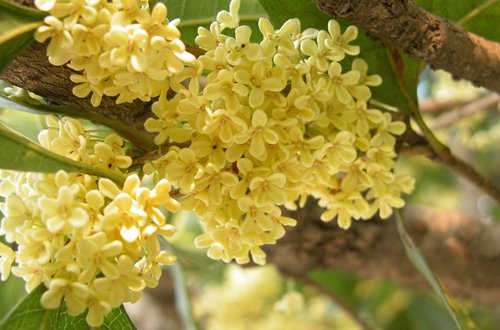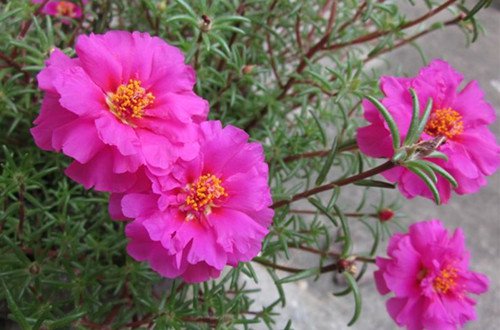What if the sweet-scented osmanthus tree loses its leaves?
Sweet-scented osmanthus tree is a kind of plant with a long history of cultivation in China. There are a large number of sweet-scented osmanthus planted in the south and southwest of the Yellow River, which are often appreciated by potted plants, but there are often some problems in the process of conservation, such as losing leaves. Do you know how sweet-scented osmanthus trees lose their leaves? What should I do in such a situation?

Below, the encyclopedia of plants is edited to analyze the reasons and solutions for the loss of leaves in sweet-scented osmanthus trees:
1. Transplanting a large number of fallen leaves
A large number of fallen leaves often occur after sweet-scented osmanthus trees are transplanted, mainly because the root system is damaged and the transport of water and nutrients is hindered, which is in the slow seedling stage.
Solution: after transplanting, sweet-scented osmanthus trees should be watered thoroughly and maintained in a ventilated and cool place without direct sunlight. Only when the leaves have vitality or new buds sprout can they be maintained normally.
2. Stagnant water leads to rotten roots and fallen leaves
Sweet-scented osmanthus trees if stagnant water will lead to rotten roots, root rot will cause defoliation.
Solution: if planting sweet-scented osmanthus trees, it is necessary to open ditches to loosen the soil and drain too much water, and potted sweet-scented osmanthus trees can change pots.
3. Diseases and insect pests lead to fallen leaves
Sweet-scented osmanthus brown spot, sweet-scented osmanthus blight and sweet-scented osmanthus anthracnose are common leaf diseases of sweet-scented osmanthus. These diseases can cause early defoliation, weaken plant growth and reduce flower yield and ornamental value of sweet-scented osmanthus.
Solution: strengthen cultivation management and reduce the source of infection. Potted sweet-scented osmanthus should remove diseased leaves in time, open-field cultivated sweet-scented osmanthus trees should thoroughly remove diseased leaves in autumn, in addition, in serious cases, chemical control should be used scientifically.
[tip] Osmanthus trees are evergreen plants that do not shed leaves even in winter, and even old leaves will fall and renew because of metabolism, but most of them are in April. At other times, old leaves are rarely deciduous. It should be noted that sweet-scented osmanthus trees generally cannot be planted in the cold winter in the north, but can only be appreciated by potted plants.
Time: 2019-04-18 Click:
- Prev

What if sunflowers don't blossom?
Sunflowers like warm, sunny and dry environment, it has the habit of seeing the sun blossom, in the morning, evening, cloudy days, the flowers close, the stronger the sun, the better. Recently, some flower friends have come to ask the sunflowers at home to grow luxuriantly, but they do not bloom, so what is the reason why the sun does not blossom?
- Next

What if Fujimoto rose doesn't blossom?
The vines have different flower patterns in this month, with colorful flowers and a long flowering period. they can bloom in three seasons, and clusters of flowers give off a strong fragrance when they bloom, which is of good ornamental value and is very popular. But in the breeding process, the vine does not blossom this month is a common problem, so, Fujimoto rose does not blossom is how to return a responsibility? What should we do?
Related
- Fuxing push coffee new agricultural production and marketing class: lack of small-scale processing plants
- Jujube rice field leisure farm deep ploughing Yilan for five years to create a space for organic food and play
- Nongyu Farm-A trial of organic papaya for brave women with advanced technology
- Four points for attention in the prevention and control of diseases and insect pests of edible fungi
- How to add nutrient solution to Edible Fungi
- Is there any good way to control edible fungus mites?
- Open Inoculation Technology of Edible Fungi
- Is there any clever way to use fertilizer for edible fungus in winter?
- What agents are used to kill the pathogens of edible fungi in the mushroom shed?
- Rapid drying of Edible Fungi

